Skype: neodalle-travel
Tel: +86 135 7447 2266
E-mail: sales@visitaroundchina.com
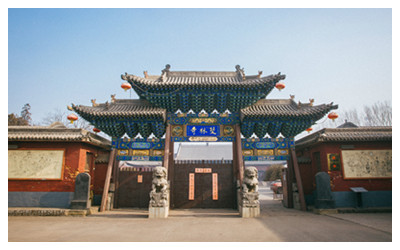 Shuanglin Temple, located in the Qiaotou Village about 6 kilometers to Pingyao Ancient City, is reputed to be the 'ancient painted sculptures museum' in China. It houses more than 2,000 colorful sculptures reflecting the exquisite skills of the artisans of the Song, Yuan, Ming and Qing Dynasties. In 1997, Shuanglin Temple was included in the World Heritage List by UNESCO as an important cultural site of Pingyao City.
Shuanglin Temple, located in the Qiaotou Village about 6 kilometers to Pingyao Ancient City, is reputed to be the 'ancient painted sculptures museum' in China. It houses more than 2,000 colorful sculptures reflecting the exquisite skills of the artisans of the Song, Yuan, Ming and Qing Dynasties. In 1997, Shuanglin Temple was included in the World Heritage List by UNESCO as an important cultural site of Pingyao City.What to see?
Shuanglin Temple consists of ten large and small halls, and the sutra chanting hall and the monks' rooms. The ten halls include the Heavenly Kings' Hall, the Arhats' Hall, the Mahavira Hall (Da Xiong Bao Dian), and the One-Thousand Buddha Hall, the Sakyamuni Hall, the Bodhisattva Hall, the Ti-tsang Bodhisattva Hall, the Guan Yu's Hall and two other halls. Guan Yu was a famous general of Shu during the Period of Three Kingdoms. Later, he would be worshipped as a god.
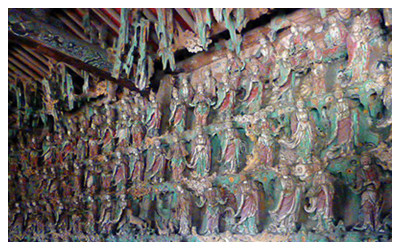 |
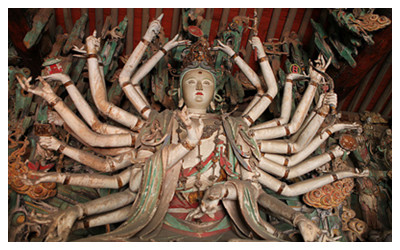 |
Heavenly Kings' Hall
Standing in front of the Heavenly Kings' Hall, tourists will see the sculptures of the four Heavenly Kings below the eaves of the veranda, which look mighty and magnificent. Below the eaves of the hall hangs a plaque with the three characters 'Tian', 'Zhu' and 'Sheng' written on it. In the Heavenly Kings' Hall, the sculpture of Maitreya is worshiped with two Bodhisattvas attending on his left and right. There are also four Heavenly Kings and eight Bodhisattvas. With a height of three meters (ten feet) each of the four holds a Pipa (a Chinese musical instrument), a sword, a snake or an umbrella in hand. All the sculptures in the hall are vivid and lifelike.
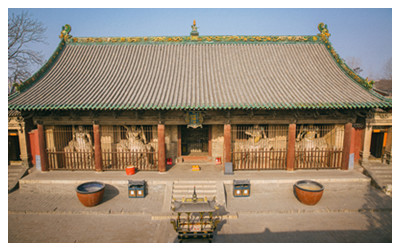
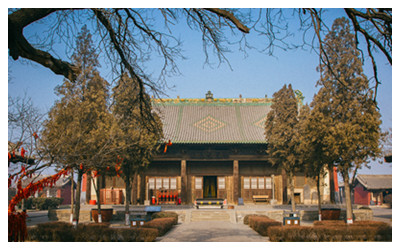
Travel Tips
Add: in the Qiaotou Village about 6 kilometers to Pingyao Ancient City
Entrance Fees: CNY 125 ( This is the ticket fare of Pingyao Ancient City combo ticket, including a visit to almost all scenic sites in the ancient city).
Opening Hours: 08:00-17:30
 Ask Questions ?
Ask Questions ?